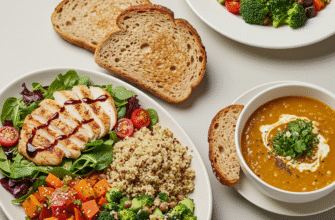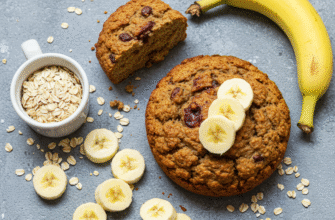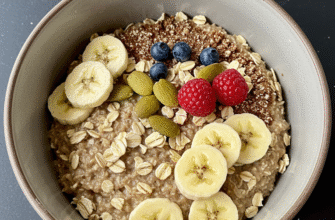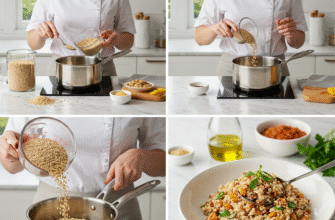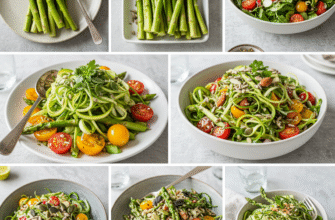Making small changes to what we eat can often lead to noticeable improvements in how we feel day-to-day. One simple yet impactful swap involves choosing whole grains over their refined counterparts. But what exactly are whole grains, and why do they get so much positive attention? Understanding the basics can help us appreciate the goodness packed inside these natural powerhouses.
Essentially, a whole grain is a grain that contains all three edible parts of the original kernel: the bran, the germ, and the endosperm. The bran is the outer layer, rich in fiber and B vitamins. The germ is the embryo, holding potential for a new plant, and it’s packed with B vitamins, some protein, minerals, and healthy fats. The endosperm is the largest part, primarily containing starchy carbohydrates, along with some protein and small amounts of vitamins and minerals. Refined grains, like white bread or white rice, have had the bran and germ removed during processing, leaving mostly just the starchy endosperm. This process strips away a significant amount of fiber, vitamins, and minerals.
The Fiber Factor: More Than Just Regularity
One of the most celebrated benefits of whole grains is their high fiber content. Fiber is crucial for keeping our digestive system running smoothly. It adds bulk, which aids movement through the digestive tract and helps maintain regularity. But the benefits of fiber extend beyond just digestion.
Foods rich in fiber tend to be more filling. This means eating whole grains can help you feel satisfied for longer after a meal, potentially reducing the urge to snack frequently between meals. This feeling of fullness, or satiety, is helpful for managing overall food intake naturally. Furthermore, the fiber in whole grains slows down the absorption of sugar into the bloodstream, leading to more stable energy levels throughout the day, avoiding the sharp peaks and subsequent crashes often associated with sugary or refined carbohydrate foods.
Nutrient Contributions
Beyond fiber, whole grains are valuable sources of various essential nutrients that contribute to overall well-being. They provide important B vitamins, including niacin, thiamin, and folate, which play roles in metabolism and energy production. They also offer minerals like iron, crucial for carrying oxygen in the blood; magnesium, involved in numerous bodily functions including muscle and nerve function; and selenium, an important antioxidant.
While refined grains are often enriched with some B vitamins and iron after processing, they typically lack the full spectrum of nutrients and the substantial fiber found in their whole-grain originals. Choosing the whole grain ensures you get the complete package as nature intended.
True whole grains are identifiable by containing all essential parts and naturally occurring nutrients of the entire grain seed. These parts are the bran, germ, and endosperm. When you choose products labeled ‘100% whole grain,’ you are getting the benefits of the entire kernel. This includes dietary fiber, vitamins, and minerals that contribute positively to a balanced diet.
Sustained Energy for Your Day
Carbohydrates are the body’s preferred source of energy. However, the type of carbohydrate matters. The complex carbohydrates found abundantly in whole grains are broken down more slowly by the body compared to the simple carbohydrates in refined grains and sugary foods. This slower digestion process results in a gradual release of glucose (sugar) into the bloodstream.
What does this mean for you? It means more consistent energy levels. Instead of a quick burst followed by fatigue, whole grains provide steady fuel to power you through your morning, afternoon, or workout. This sustained energy release can also contribute to better focus and concentration.
Supporting a Healthy Gut Environment
The importance of gut health is increasingly recognized, and diet plays a significant role. The fiber in whole grains acts as a prebiotic. Prebiotics are essentially food for the beneficial bacteria (probiotics) residing in your digestive system. By nourishing these helpful microbes, whole grains contribute to a healthier and more balanced gut microbiome. A thriving gut environment is linked to better digestion and overall well-being.
Easy Ways to Eat More Whole Grains
Incorporating more whole grains into your diet doesn’t require a complete overhaul. Small, consistent swaps can make a big difference over time.
Simple Swaps
- Choose 100% whole-wheat bread, bagels, or English muffins instead of white versions.
- Opt for brown rice instead of white rice. Brown rice retains the bran and germ, offering more fiber and nutrients.
- Use whole-wheat pasta instead of traditional white pasta.
- Switch your morning cereal to one that lists a whole grain (like whole wheat, oats, or bran) as the first ingredient and has minimal added sugar.
- Use whole-wheat flour or a mix of whole-wheat and white flour when baking muffins, cookies, or pancakes.
Meal Ideas
- Breakfast: Start your day with oatmeal (made from rolled or steel-cut oats), topped with fruit and nuts. Consider whole-grain pancakes or waffles.
- Lunch: Prepare salads with a base of quinoa, farro, or barley. Make sandwiches on whole-wheat bread or wraps. Enjoy soups thickened with barley.
- Dinner: Serve main dishes alongside brown rice, quinoa, or bulgur. Try whole-wheat pizza crust. Explore dishes featuring grains like freekeh or millet.
- Snacks: Air-popped popcorn is a whole-grain snack! Choose whole-grain crackers instead of refined ones. A small bowl of whole-grain cereal can also be a good snack option.
Reading Labels: Finding the Real Deal
Food labels can sometimes be confusing. Terms like “multigrain,” “stone-ground,” “100% wheat,” or “bran” don’t necessarily mean a product is whole grain. “Multigrain” simply means more than one type of grain is present, but they might all be refined. “Wheat flour” usually refers to refined white flour.
To be sure you’re getting whole grains, look for these clues:
- Check the ingredient list: Look for the word “whole” before the name of the grain, such as “whole wheat,” “whole oats,” “whole rye,” or “brown rice.” Ideally, this whole grain should be listed as the first or second ingredient.
- Look for the “100% Whole Grain” stamp: Many products carry official stamps indicating the amount of whole grain per serving. The 100% stamp signifies that all grain ingredients are whole grains.
Variety is the Spice of Life (and Grains!)
Don’t just stick to whole wheat and brown rice. There’s a wide world of delicious and nutritious whole grains to explore:
- Oats: Versatile for breakfast, baking, or even savory dishes.
- Quinoa: A quick-cooking pseudo-cereal, great in salads and bowls.
- Barley: Nutty and chewy, perfect for soups and stews.
- Bulgur: Parboiled cracked wheat, cooks quickly, key in tabbouleh.
- Millet: Small grain, often used like rice or couscous.
- Farro: An ancient wheat grain with a chewy texture.
- Rye: Often found in bread and crackers, known for its robust flavor.
- Buckwheat: Despite the name, it’s unrelated to wheat (it’s gluten-free) and great for pancakes or soba noodles.
Experimenting with different grains adds variety in flavor, texture, and nutrients to your meals, making healthy eating more enjoyable and sustainable.
Making the switch to whole grains is a positive step towards a more balanced way of eating. By providing essential fiber, nutrients, and sustained energy, these unprocessed grains offer tangible benefits for everyday well-being. Start with small changes, explore the variety available, and enjoy the wholesome goodness they bring to your plate.


